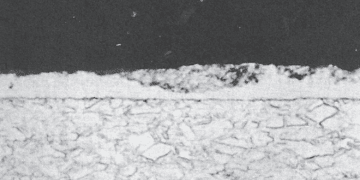As noted previously, nickel surfaces always consist of a self limiting and very thin layer of nickel oxide, 0.01 µm (0.25 microinches). Nickel oxide is a P type semiconductor and will introduce a series resistance at the contact interface in excess of the metal-to-metal constriction resistance. Nickel contact interfaces, therefore, will have a higher constriction resistance than finishes in which a metal-to-metal interface can be realized.
Nickel is also susceptible to fretting corrosion similar to that in tin, a build up of nickel oxide debris at the contact interface.
The most common application for nickel contact finishes is in battery contacts.



















